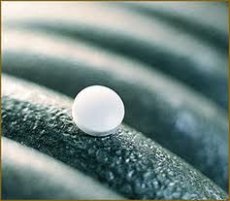Medical expert of the article
New publications
Preparations
Chromium picolinate
Last reviewed: 06.07.2025

All iLive content is medically reviewed or fact checked to ensure as much factual accuracy as possible.
We have strict sourcing guidelines and only link to reputable media sites, academic research institutions and, whenever possible, medically peer reviewed studies. Note that the numbers in parentheses ([1], [2], etc.) are clickable links to these studies.
If you feel that any of our content is inaccurate, out-of-date, or otherwise questionable, please select it and press Ctrl + Enter.

Chromium is a mineral required in small amounts for carbohydrate and fat metabolism. Dietary sources include carrots, potatoes, broccoli, whole grains, and molasses. Picolinate is a byproduct of tryptophan that is combined with chromium in supplements because it is thought to help the body absorb chromium more easily.
Main functions of chromium picolinate
- Increases muscle mass.
- A harmless alternative to anabolic steroids.
- Reduces the amount of fatty tissue.
- Increases insulin sensitivity.
Theoretical foundations
Chromium is an essential cofactor that enhances the action of insulin in carbohydrate, lipid, and protein metabolism. It enhances the effect of insulin on target tissues and promotes glucose transport by "sensitizing" body tissues to insulin. Since insulin also regulates protein synthesis, chromium enhances this synthesis by promoting the absorption of amino acids.
Picolinic acid is a tryptophan derivative and is thought to be involved in chromium absorption. In large amounts, chromium picolinate is thought to increase muscle mass and decrease fat tissue. Chromium picolinate is thought to enhance the anabolic properties of insulin, allowing more amino acids and glucose to enter cells and promote muscle growth.
Research results
The claims of chromium picolinate's fat-burning and muscle-building effects are based on two studies described in a review article by Evans. The first group received 200 mcg of chromium picolinate per day for 5-6 weeks of weight training, while the second group received a placebo. The first group in both studies saw an increase in muscle mass (1.6-2.6 kg); there was no change in fat composition (3.6%) compared to the placebo group.
Clancy et al. studied the effects of chromium picolinate supplementation on body composition, strength, and urinary chromium losses in soccer players. Athletes took 200 μg of chromium picolinate or placebo during 9 weeks of spring training. No significant differences were found between the experimental and control groups, except that the chromium picolinate group lost 5 times more chromium in urine than the placebo group.
Research conducted at the USDA also did not support the marketing claims for chromium picolinate. Hallmark et al. evaluated the effects of chromium picolinate supplementation and weightlifting training on muscle strength, body composition, and chromium excretion. Athletes received either 200 mcg of chromium picolinate or a placebo for 12 weeks. The training included lifting weights 3 days per week. The training program significantly increased muscle strength in both groups. The chromium picolinate group lost chromium in the urine 9 times greater than the placebo group. There were no significant differences in muscle strength or body composition between the groups.
Lukaski et al. looked at the effects of chromium supplementation on body composition, muscle strength, and micronutrient status. Subjects received either 200 μg chromium chloride, 200 μg chromium picolinate, or placebo for 8 weeks. Training included weight lifting 5 days per week. Chromium supplementation increased serum chromium concentrations and urinary chromium excretion. No differences were found in the chemical forms of chromium. Transferrin saturation decreased more with chromium picolinate supplementation (24%) than with chromium chloride (10%) or placebo (13%). There were no significant differences between groups in muscle strength or body composition.
Claimed effect of chromium picolinate
Chromium picolinate is thought to promote weight loss, increase muscle mass, decrease body fat, lower cholesterol and triglyceride levels, and enhance insulin function. Chromium is needed for insulin to work effectively in cells. Some evidence suggests it may be helpful for people with diabetes, but not all patients report benefit after taking it; chromium is not a substitute for standard lifestyle changes and medications for diabetes.
Recommendations
Because exercise increases urinary chromium excretion, athletes should be careful to ensure adequate chromium intake. The National Research Committee has determined that oral supplements of 50-200 mcg are safe and adequate. The amount of chromium obtained from a variety of foods should meet the needs of most athletes. Chromium is found in large amounts in whole grains, nuts, molasses, asparagus, brewer's yeast, cheese, mushrooms, and beer.
In November 1996, the Federal Trade Commission (FTC) banned three of the largest distributors of chromium picolinate from marketing their product. The FTC's complaint charged that the companies failed to live up to numerous claims made for the supplements (such as reduced body fat, increased muscle mass, and increased energy). The FTC also accused the companies of falsely claiming that chromium picolinate's benefits were scientifically proven.
Adverse effects of chromium picolinate
Some evidence suggests that chromium picolinate damages chromosomes and may cause cancer. Some forms of chromium may contribute to ulcers and gastrointestinal irritation.
Attention!
To simplify the perception of information, this instruction for use of the drug "Chromium picolinate" translated and presented in a special form on the basis of the official instructions for medical use of the drug. Before use read the annotation that came directly to medicines.
Description provided for informational purposes and is not a guide to self-healing. The need for this drug, the purpose of the treatment regimen, methods and dose of the drug is determined solely by the attending physician. Self-medication is dangerous for your health.


 [
[